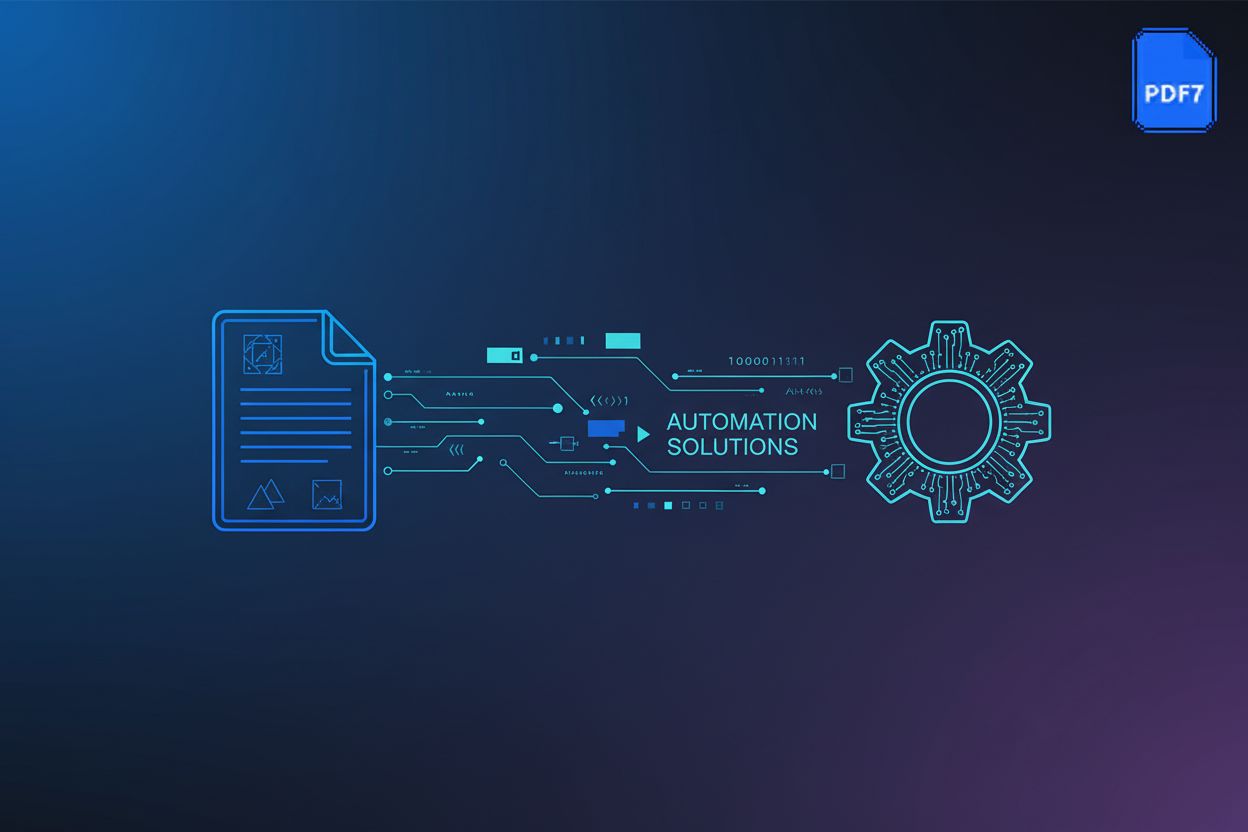Navigating PDF Chaos: A Comprehensive Guide to Version Compatibility and Seamless Migration
TL;DR
Understanding PDF Versions: A Historical Overview
Did you know the PDF format has been around for over 30 years? (History of PDF - Wikipedia) It's evolved significantly since its inception, so let's take a look at how it all started.
Initially, PDFs aimed to create a universal file format. The idea was to preserve document fidelity across any system. From version 1.0 onward, the PDF has seen major revisions, each adding capabilities. (The scope of each PDF version - Prepressure)
- PDF 1.0 introduced basic features like text and graphics.
- PDF 1.4 brought support for interactive forms.
- PDF 1.7 was a significant release, introducing digital signatures.
- Current versions (like PDF 2.0) support rich media and enhanced accessibility features.
For example, healthcare providers use PDFs to share patient records, while retail companies use them for invoices. Finance firms rely on PDFs for secure document exchange. However, the diverse adoption of different PDF versions across these industries can lead to compatibility challenges.
Early versions had limited features, causing compatibility issues as the standard evolved. This guide will help you navigate these complexities.
As we move forward, we'll explore how these version differences impact document migration.
The Importance of PDF Version Compatibility
PDF version compatibility is more critical than many realize. Older PDF viewers might not properly display newer PDFs, leading to missing content or broken features.
Here's why it's essential:
- Accessibility: Users should be able to open and read PDFs on any device, regardless of the software version.
- Data Integrity: Compatibility issues may cause data loss, especially with interactive elements.
- Consistent Rendering: Newer features like transparency might not display correctly on older viewers.
Think of a law firm sharing critical documents. If one attorney uses a PDF 1.7-compatible viewer and another uses a viewer that only supports PDF 1.3, they could see entirely different documents.
Ensuring everyone can access the same content ensures smoother workflows and collaboration. Want to update your PDFs? Next, we'll look at how to navigate compatibility challenges.
Identifying PDF Version and Supported Features
Here's how to pinpoint a PDF's version and ensure it supports the features you need. Knowing this prevents compatibility issues and ensures your documents display as intended.
- Adobe Acrobat: Open the PDF, go to "File," then "Properties." The version is listed under the "Description" tab.
- Preview (Mac): Open the PDF, then select "File" and then "Get Info." Look for the PDF version information.
- Online Tools: Use a PDF analysis tool by uploading your document to identify the version.
Each PDF version supports different features. Newer versions support advanced features like rich media and enhanced security. If advanced features don’t display properly, the viewer may be outdated. To ensure your documents work correctly, confirm that your viewer supports the PDF version.
Next, we’ll explore how to update your PDF to use the latest version.
Strategies for PDF Version Migration and Conversion
Here's how to make sure your updated PDFs work everywhere. Converting and migrating PDFs can be tricky, but with the right approach, you can minimize compatibility issues.
Updating a PDF often involves saving it in a newer format. Here's how:
- Using PDF Editors: Open your PDF in a tool like Adobe Acrobat. Then, choose the "Save As" option and select a more recent PDF version.
- Batch Processing: For numerous files, utilize batch processing features in PDF editors. This automates the update, saving time and ensuring consistency.
- File Size and Compatibility: Newer versions might increase file size. So, balance feature support with file size, especially for sharing, as larger files can be harder to transmit and may encounter bandwidth limitations, which can indirectly impact perceived compatibility.
Flattening removes interactive elements. This simplifies the PDF and boosts compatibility with older viewers.
- What It Does: Flattening merges all layers and elements into a single, static layer, removing complex interactive elements that older viewers might struggle to interpret, thus ensuring consistent rendering.
- Tools: Use Adobe Acrobat or online services to flatten PDFs.
- When to Flatten: Flatten when interactivity isn't needed, such as for archiving or printing.
Now that you know how to manage PDF versions, let's enhance compatibility even further.
Tools for Managing PDF Compatibility
Managing PDF compatibility can feel overwhelming. Fortunately, several tools simplify this task, ensuring documents display correctly across different devices.
There are tools that offer conversion, compression, and editing features. They tackle version compatibility, making files accessible regardless of the viewer. Other tools provide similar capabilities, such as optimization and repair for problematic PDFs.
For instance, Nutrient provides detailed changelogs for its Android SDK, outlining fixes for rendering issues and enhancements for cross-platform compatibility.
As you explore these tools, it’s important to consider PDF security.
Troubleshooting Common PDF Compatibility Issues
It's frustrating when PDFs don't display as expected. Compatibility issues arise from various factors, but you can address many of them directly.
- Outdated Software: Ensure your PDF viewer supports the PDF's version.
- Corrupted Files: Try opening the PDF with a different viewer to determine if the file is damaged.
- Incorrect Settings: Check if your viewer's settings are affecting display PDF version compatibility. For example, look for settings related to font handling, JavaScript execution, or rendering preferences that might be configured to ignore certain PDF features.
What if you need to edit a PDF? We'll explore security features next.
Best Practices for Long-Term PDF Archiving
Archiving PDFs? Think long term. The right approach ensures your documents remain accessible and readable for decades.
PDF/A is ISO-standardized for archiving electronic documents. It embeds fonts and restricts features, guaranteeing consistent rendering over time.
Key restrictions in PDF/A include:
- No external dependencies: All fonts, color profiles, and images must be embedded within the PDF.
- No audio or video content: Multimedia is not allowed.
- No encryption: Security features that could hinder future access are prohibited.
- No JavaScript: Interactive elements are removed.
- Compliance: Create PDF/A documents using conversion tools.
- Validation: Regularly validate archived PDFs to ensure ongoing compliance.
- Accessibility: PDF/A ensures documents remain accessible by embedding necessary information and restricting features that could become obsolete.
Choose PDF/A to avoid future compatibility headaches. Next, let’s look at the PDF/A standard in practice.





